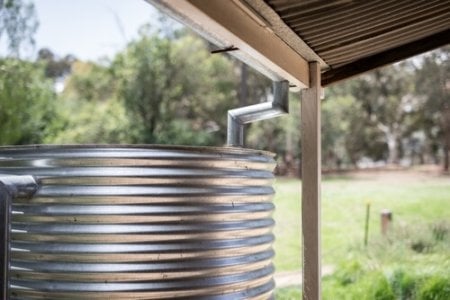Domestic Water Tanks: The Tech Guy – Dr Al
- Replies 2
Note from the Editor:
This article was kindly written for the SDC by member @Doctor Alan.
Rural tanks:
We lived in WA for about twenty years before moving to Brisbane in 2015. Always having a yen for our ‘5 acres by the sea’, we eventually realised that was a ‘bridge too far’ – we simply couldn’t afford it. We compromised and found 5 acres in Dandaragan, with the sales sign reading: ‘SECWA to boundary’. Later, we found that this meant that we would get electricity to the boundary of our property – single phase, 32 amps, as soon as a transformer was set up, the cost of which would be borne by all its users on a shared basis. We would have to buy a water tank, and that would be our only source of water. The tank was around 100,000 litres, and would catch all the rainwater from the house, shed and carports. We never had any trouble with running out, but were secure in the knowledge we could always get a tanker to top it up if necessary. The big advantage of this arrangement was, of course, that we didn’t have to pay water rates.
At this point, I really wish there had been some handbook or other that would have given us the low-down on living in the country – perhaps that’s another article I should write.
For instance, not everybody knows how a septic tank works or that a pump attached to the water tank detects a slight drop in pressure of the outlet and the pump starts automatically, so you have as much pressure as a home in the suburbs, or thereabouts.
Our next home was in Gingin – a bit closer to Perth – and we splashed out for a larger tank – about 170,000 litres. We had a free-standing games room, a huge shed, a large carport, and a shaded patio area, all of which contributed to the water supply for the tank. Once again, we had absolutely no worries about running out of water – and it was all free! I’d researched pumps quite well and found that the Grundfos brand was worth paying the extra for. We had excellent pressure throughout the house, including the top floor.
Lorem ipsum dolor sit amet, consectetur adipiscing elit. Quisque in diam id erat facilisis consectetur vitae vel urna.
Ut lacus libero, suscipit auctor ipsum sit amet, viverra pretium nisl. Nullam facilisis nec odio nec dapibus. Integer maximus risus et velit porttitor ullamcorper
Read more for FREE!
Become a member today and join over 200,000 Australians already taking advantage of daily news, weather, petrol costs, games, jokes, deals and more.
-
FREE 400-page Discount eBook upon joining
-
FREE Aussie-made eBook & many more
-
Multiple daily discounts for members
-
No payment required
Register Faster Using
Or Register with email
Already a member?








